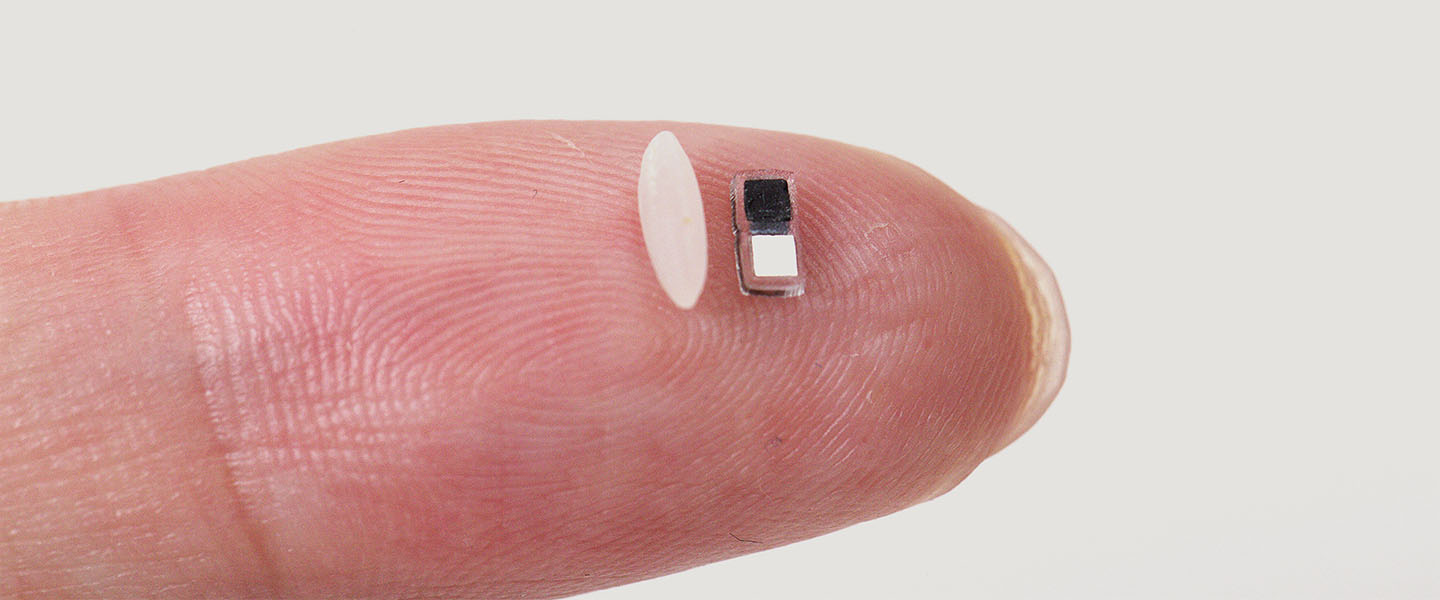4 April 2025, El Paso, Texas – Editors note: Ms. Ruth Williams of Austin, Texas, sent us the following. She said she is excited to see such a tiny pacemaker now available.
“While this was not a thing when my baby needed such a device, it will now save an untolled number of children,” says Ms. Williams.
According to a new study published in Nature, Northwestern University engineers have developed a tiny pacemaker that can fit inside the tip of a syringe and be non-invasively injected into the body.
Although it can work with hearts of all sizes, the pacemaker is particularly well-suited to the tiny, fragile hearts of newborn babies with congenital heart defects.
A pacemaker is an implantable device that helps maintain an even heart rate, either because the heart’s natural cardiac pacemaker provides an inadequate or irregular heartbeat or because of a block in the heart’s electrical conduction system.
Smaller than a single grain of rice, the pacemaker is paired with a small, soft, flexible, wireless, wearable device that mounts onto a patient’s chest to control pacing. When the wearable device detects an irregular heartbeat, it automatically shines a light to activate the pacemaker.
These short light pulses, which penetrate through the patient’s skin, breastbone, and muscles, control the pacing.
Designed for patients who only need temporary pacing, the pacemaker simply dissolves after it’s no longer needed. All the pacemaker’s components are biocompatible, so they naturally dissolve into the body’s biofluids, bypassing the need for surgical extraction.
The paper demonstrates the device’s efficacy across a series of large and small animal models as well as human hearts from deceased organ donors.
“We have developed what is, to our knowledge, the world’s smallest pacemaker,” said John A. Rogers, PhD, professor of Neurological Surgery, Dermatology, and in the McCormick School of Engineering, who led the device development.
“There’s a crucial need for temporary pacemakers in the context of pediatric heart surgeries, and that’s a use case where size miniaturization is incredibly important. In terms of the device load on the body—the smaller, the better.”
“Our major motivation was children,” said Igor Efimov, PhD, professor of Medicine in the Division of Cardiology and in the McCormick School of Engineering, who co-led the study.
“About 1% of children are born with congenital heart defects, regardless of whether they live in a low-resource or high-resource country. The good news is that these children only need temporary pacing after a surgery. In about seven days or so, most patients’ hearts will self-repair. But those seven days are absolutely critical. Now, we can place this tiny pacemaker on a child’s heart and stimulate it with a soft, gentle, wearable device. And no additional surgery is necessary to remove it.”
This work builds on a previous collaboration between Rogers and Efimov, in which they developed the first dissolvable device for temporary pacing. Many patients require temporary pacemakers after heart surgery — either while waiting for a permanent pacemaker or to help restore a normal heart rate during recovery.
For the current standard of care, surgeons sew the electrodes onto the heart muscle during surgery. Wires from the electrodes exit the front of a patient’s chest, where they connect to an external pacing box that delivers a current to control the heart’s rhythm.
When the temporary pacemaker is no longer needed, physicians remove the pacemaker electrodes. Potential complications include infection, dislodgement, torn or damaged tissues, bleeding, and blood clots.
“That’s actually how Neil Armstrong died,” Efimov said. He had a temporary pacemaker after a bypass surgery. When the wires were removed, he experienced internal bleeding.”
In response to this clinical need, Rogers, Efimov, and their teams developed their first dissolvable pacemaker, which was introduced in Nature Biotechnology in 2021. The thin, flexible, lightweight device eliminated the need for bulky batteries and rigid hardware, including wires.
To help further reduce the device’s size, the researchers also reimagined its power source. Instead of using near-field communication to supply power, the new, tiny pacemaker operates through the action of a galvanic cell, a type of simple battery that transforms chemical energy into electrical energy. Specifically, the pacemaker uses two different metals as electrodes to deliver electrical pulses to the heart. When in contact with surrounding biofluids, the electrodes form a battery. The resulting chemical reactions cause the electrical current to flow to stimulate the heart.
“When the pacemaker is implanted into the body, the surrounding biofluids act as the conducting electrolyte that electrically joins those two metal pads to form the battery,” Rogers said. “A very tiny light-activated switch on the opposite side from the battery allows us to turn the device from its ‘off’ state to an ‘on’ state upon delivery of light that passes through the patient’s body from the skin-mounted patch.”
The team used an infrared wavelength of light that penetrates deeply and safely into the body. If the patient’s heart rate drops below a certain rate, the wearable device detects the event and automatically activates a light-emitting diode. The light then flashes on and off at a rate that corresponds to the normal heart rate.
“Infrared light penetrates very well through the body,” Efimov said. “If you put a flashlight against your palm, you will see the light glow through the other side of your hand. It turns out that our bodies are great conductors of light.”
Even though the pacemaker is so tiny—measuring just 1.8 millimeters in width, 3.5 millimeters in length and 1 millimeter in thickness—it still delivers as much stimulation as a full-sized pacemaker.
“The heart requires a tiny amount of electrical stimulation,” Rogers said. “By minimizing the size, we dramatically simplify the implantation procedures, we reduce trauma and risk to the patient, and, with the dissolvable nature of the device, we eliminate any need for secondary surgical extraction procedures.”
The study was supported by the Querrey Simpson Institute for Bioelectronics, the Leducq Foundation, and the National Institutes of Health (award number R01 HL141470).
